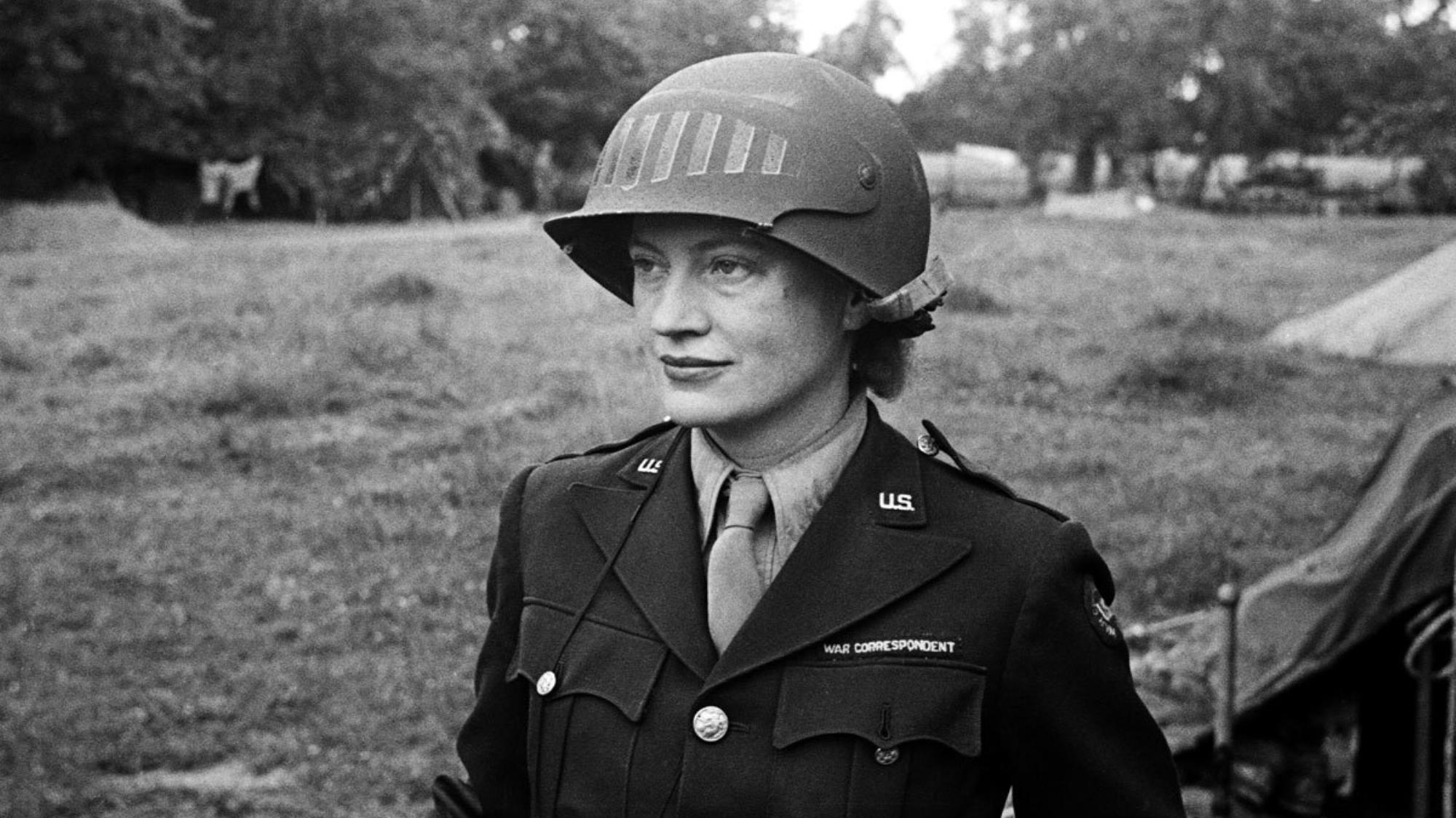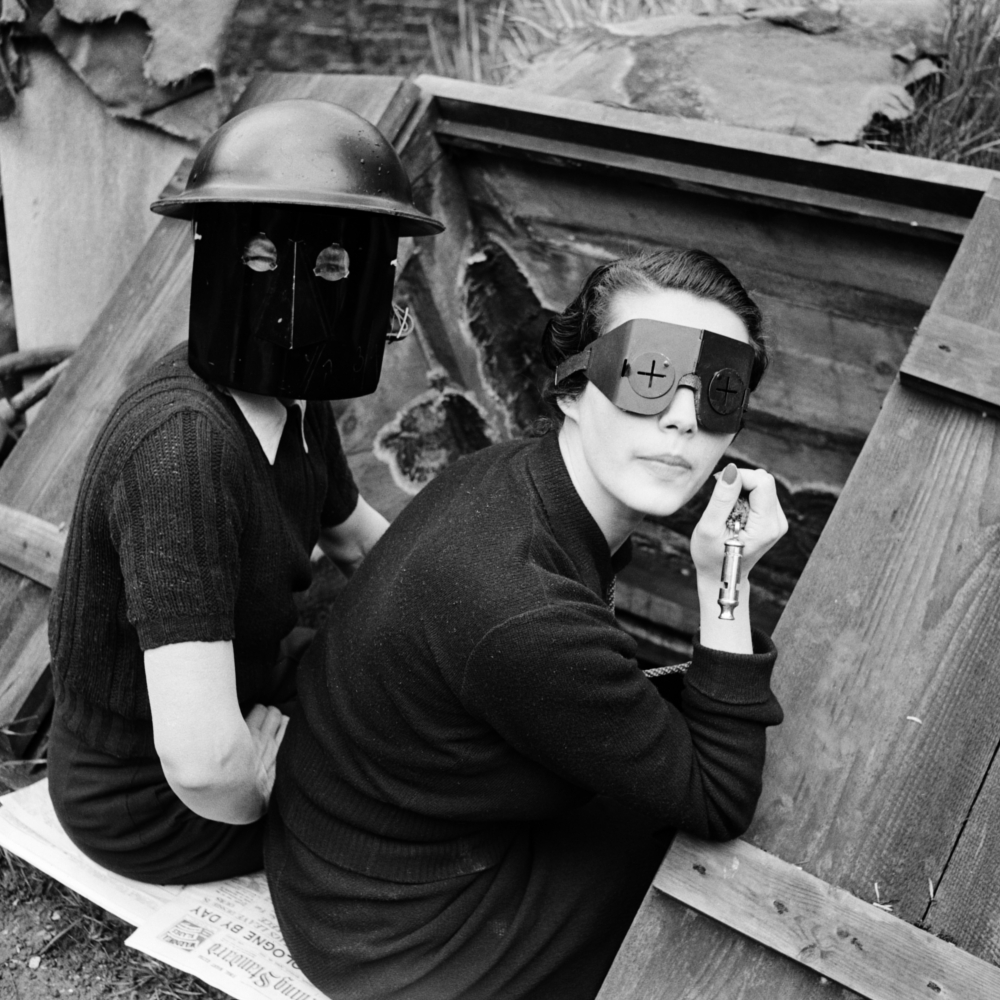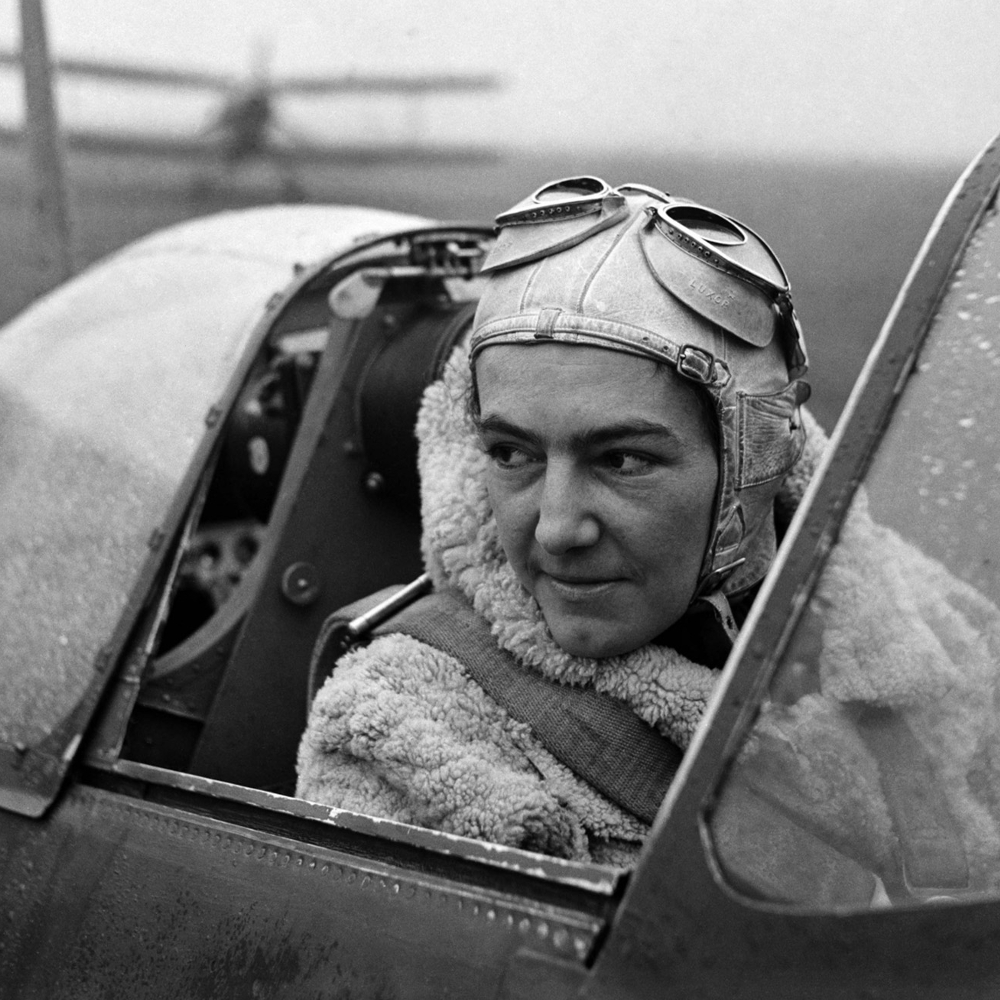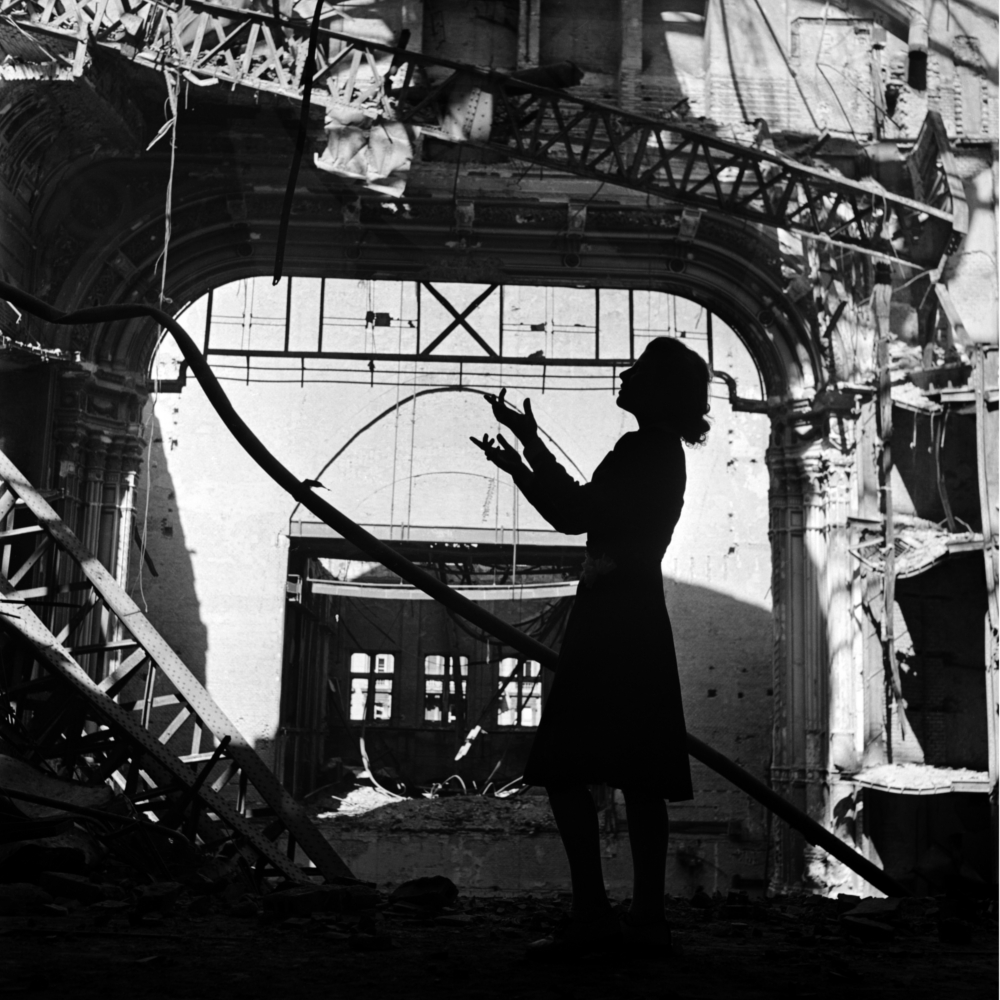
Model and muse Lee Miller is arguably one of the 20th century’s most influential photographers.
Whether photographing Paris’s bohemian arts scene, shooting the latest fashions for Vogue, or documenting the horrors of war, her lens captured the surreal nature found within both everyday life and the most extraordinary of situations.
Bringing together a number of iconic and never before seen images, IWM London’s major exhibition Lee Miller: A Woman’s War traces the line between Miller’s work as London correspondent for Vogue magazine during the blitz through to her daring role as a photographer at some of the most decisive moments towards the close of the Second World War.
To learn more about the exhibition, we met with exhibition curator Hilary Roberts to discuss Lee Miller’s legacy and the evolving vision of women’s roles and lives in Britain and Europe she captured.
Image above: Lee Miller in steel helmet specially designed for using a camera, Normandy, France 1944 by unknown photographer Photographer Unknown © The Penrose Collection, England 2015. All rights reserved.
—
What was the impetus for the exhibition?
The exhibition is the outcome of an idea developed by myself and Antony Penrose (Lee Miller’s son and founder of the Lee Miller Archives) during a business trip to Jordan five years ago. Although Lee Miller’s achievements as a wartime combat photographer for Vogue magazine had received a lot of attention, her photographs of women in wartime Britain and Europe – which formed the bulk of her output – were barely known.

Fire Masks, Downshire Hill, London, England 1941 by Lee Miller © Lee Miller Archives, England 2015. All rights reserved.
As one of the few female war correspondents of the time, what do you think Miller’s unique viewpoint brought to the subject?
The exhibition examines how Lee Miller documented the evolving experience of women in Britain and Europe during the Second World War. Her photographs capture a process of continuous change and adaptation to wartime demands, but they also reflect Miller’s personal transformation from fashion photographer to front line war correspondent.
“Her wartime work reflects her unique insight as
a woman… merging the worlds of art, fashion
and photojournalism in a single image.”
I wanted to explore Lee Miller’s vision of gender and consider to what extent, if any, a war photographer’s gender makes a difference. Her wartime work reflects her unique insight as a woman and a photographer capable of merging the worlds of art, fashion and photojournalism in a single image.
How do you think Millers dalliances with surrealist artists and photographers such as Man Ray and Picasso fed back into her work?
In 1932, a journalist quoted Lee Miller as saying ‘What you mostly do is absorb the character of the man you’re working with. The personality of the photographer, his approach, is really more important than his technical genius.’ Miller was a lifelong Surrealist who took inspiration from photographers, such as Man Ray and George Hoyningen-Huene, who worked in the fashion industry. We wanted to show how, as a professional photographer, she often reinterpreted photographs by her mentors.

Anna Leska, Air Transport Auxilliary, Polish pilot flying a spitfire, White Waltham, Berkshire, England 1942 by Lee Miller © Lee Miller Archives, England 2015. All rights reserved.
How has Miller’s photography had an impact on the narrative we place on the Second World War?
As a US official war correspondent in Europe, she was the only photographer present at the siege of St Malo, during which she documented the first use of napalm by American forces. Her coverage of events in 1945, which included the liberation of German concentration camps, is vital to our understanding of the horrors of these events.
“Her coverage of events in 1945
is vital to our understanding of
the horrors of these events.”
Say Miller was alive and working today, in what ways do you think the picture she portrays of women’s lives would look similar or different?
Today, thanks to social and legislative changes such as the Equal Opportunities Act, women live their lives on far more equal terms than was the case in the Second World War. This includes women in the armed forces – although Britain’s armed forces have yet to decide whether to allow servicewomen to fight in the very front line.
Fashions are more individual and casual, with many women wearing jeans every day. Elegance is still important but no longer the only influence.

Irmgard Seefried, Opera singer, singing an aria from ‘Madame Butterfly’, Vienna Opera House, Vienna, Austria 1945 by Lee Miller. © Lee Miller Archives, England 2015. All rights reserved.
Lee Miller: A Woman’s War runs at IWM London until 24th April 2016. Make sure to enter our competition to win tickets to the exhibition plus a night’s stay at the Mondrian London at Sea Containers:
